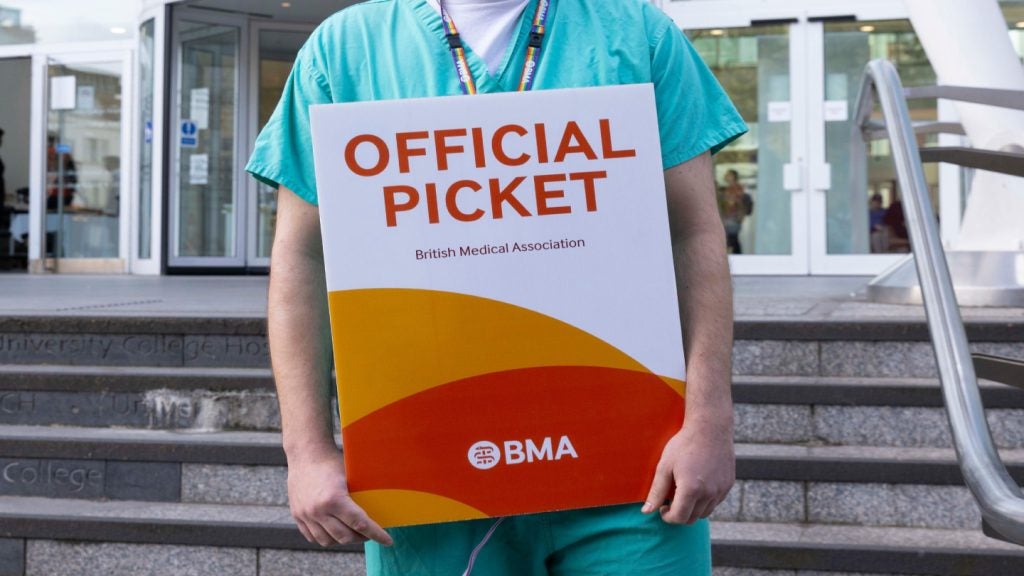
Around the world, the number of hospital-acquired methicillin-resistant Staphylococcus aureus (HA-MRSA) infections is on the rise. In 1974, MRSA accounted for just 2% of all healthcare-associated MRSA infections in US intensive care units. By 1995, the proportion had jumped to 22% and in 2004 reached 64%. Similar increases have been observed around the globe, with MRSA accounting for increasing rates of S. aureus bacteremia in Canada and the UK. With 20% of invasive MRSA infections resulting in death, the failure to reduce HA-MRSA poses a serious threat to patients’ health.
In the US alone, approximately 126,000 hospitalisations each year are related to MRSA infection, and these infections are associated with higher morbidity and mortality rates, longer hospital stays, and higher costs than those caused by methicillin-sensitive S. aureus (MSSA). Invasive MRSA infections occur in 94,000 people each year in the US and lead to nearly 19,000 deaths annually, higher than HIV/AIDS.
HA-MRSA infections also are associated with substantial medical costs and increased use of medical and personnel resources. The annual cost of treating MRSA in US hospitals is estimated at $3.2bn to $4.bn, with excess medical costs ranging from $23,783 to $34,900 per patient.
The growing incidence of HA-MRSA highlights the limitations of current infection control practices and creates a compelling case for new strategies to protect patients from what is clearly an avoidable medical complication. Recognising the need to take a more proactive and vigilant approach to reducing the clinical and economic impact of HA-MRSA infections, many local, regional, and national authorities are recommending and, in some cases, requiring more aggressive screening, documentation, and reporting of MRSA.
In the US, many states have enacted legislation regarding screening for MRSA colonisation and/or reporting of MRSA disease; and federal legislation eliminates reimbursement for treatment of certain MRSA-related conditions acquired in hospitals. Health authorities in the UK have mandated MRSA screening and implementation of enhanced infection control procedures. Many other European countries also recommend or mandate infection control programmes that include a screening component.
See Also:
Reducing the rates of MRSA colonisation is expected to improve healthcare outcomes by preventing infection and reduce the overall costs associated with MRSA. However, there is a delicate balance between isolating patients who are not MRSA-positive and failing to isolate MRSA-patients from the general hospital population. Individual facilities and healthcare systems need to find that balance through infection control practices that meet the needs of the communities they serve and are consistent with the financial, clinical and personnel resources available to them.
How well do you really know your competitors?
Access the most comprehensive Company Profiles on the market, powered by GlobalData. Save hours of research. Gain competitive edge.

Thank you!
Your download email will arrive shortly
Not ready to buy yet? Download a free sample
We are confident about the unique quality of our Company Profiles. However, we want you to make the most beneficial decision for your business, so we offer a free sample that you can download by submitting the below form
By GlobalDataIdentify the carriers
Due to the need to tailor infection control programmes so that they are clinically and financially effective, a variety of guidelines recommend different approaches to preventing and controlling healthcare-associated infections. While the specifics of these guidelines may vary, there are several elements that are central to all of them:
- infection control precautions for infected and known colonised patients
- hand hygiene
- decontamination of the environment and equipment
- active surveillance when other measures are not significantly reducing disease.
Some also advocate treatment of colonised patients harbouring certain organisms, particularly MRSA, with antimicrobial ointments and/or disinfectant baths. Although each of these elements can contribute to eliminating MRSA from the hospital environment, preventing MRSA transmission among patients and reducing the risk of systemic infection in non-colonised patients, none of them alone are sufficient for controlling MRSA. Consequently, healthcare facilities and physicians need to take a more comprehensive and integrated approach to MRSA infection control, making sure to include effective surveillance as a component of the overall strategy.
As the incidence and threat of HA-MRSA grows, there has been increasing interest in evaluating the impact of specific infection control practices on infection rates and overall healthcare outcomes. Several studies have been conducted and, as expected, the results of these studies have varied based on the setting within the hospital as well as the overall prevalence of MRSA in the community. What appears crucial in these reports is the percentage of days that patients harbouring MRSA are actually in isolation while hospitalised.
Critical to this is the sensitivity of the patient population screened, the laboratory test used and the speed at which test results are reported. While these studies have not yet identified one single approach that could be deemed best practice, they provide a growing body of evidence that supports the clinical and economic benefit of MRSA control using a programme that includes active surveillance. The evidence includes:
- identifying infected cases alone misses 85% of carriers
- carriers are 6-20% more likely to become infected; 10-times high than non-carriers
- carriers are 16 times more likely to transmit MRSA to others for each day that they spend outside contact isolation.
Rapid and sensitive
Once a hospital decides to incorporate active surveillance into its MRSA infection control programme, the next question is which surveillance method to use. Ideally, the chosen method should enable rapid determination of a patient’s colonisation status when they enter a healthcare facility, allowing healthcare personnel to implement appropriate infection control measures as quickly as possible. In order to achieve this goal, the MRSA screening technique must be rapid, highly sensitive and specific, with a high negative predictive value. A lack of sensitivity in test performance or a delay in time-to-result may result in suboptimal and costly infection control measures with no improvement in MRSA control.
While MRSA testing has traditionally been performed using culture-based methods, PCR-based MRSA tests are now available. Both approaches start with nasal swab samples, but they differ significantly in sensitivity and time-to-results. Most of the commercially available MRSA tests require a short manual sample preparation step, but use automated systems for subsequent DNA amplification and generation of results.
Consequently, in an optimally designed infection control programme, PCR results can be made available to infection control or healthcare personnel within a few hours of the patient entering the facility, enabling rapid, appropriate and optimal patient management and infection control measures in less than 24 hours. Additionally, automation enables high volume use of PCR-based MRSA detection methods, supporting improved infection control measures even in facilities with large patient populations and high numbers of admissions.
PCR-based testing has a more rapid turnaround time, higher sensitivity for detecting likely MRSA colonised patients, and superior negative predictive value compared with culture-based methods. Faster time-to-results allows hospitals to optimise their allocation of infection control resources, including timely implementation of appropriate contact precaution measures for MRSA-positive patients, and elimination of unnecessary cost and personnel demands for pre-emptive isolation (isolation of all admitted patients until a screening test is negative) of MRSA-negative patients.
PCR-based tests with a high negative predictive value also will reduce the number of patients who are inappropriately placed in isolation and treated due to false-positive test results.
There is growing evidence that faster detection of MRSA translates into substantial reduction in the risk of acquiring MRSA. For example, Cunningham et al (2007) found that PCR-based screening for MRSA of patients admitted to the critical care unit of a 1,200-bed teaching hospital in south west England resulted in a 65% reduction in the risk of acquiring MRSA compared with the use of culture-based methods.
Similarly, PCR-based screening of elective and emergency surgery patients at the University College Hospital in London reduced MRSA infections and wound isolates by 38.5% and 12.7%, respectively, compared with the use of culture-based screening methods. Two other studies from Harbarth et al (2006) and Jeyaratnam et al (2008) showed that PCR tests with lower sensitivity (84-88%) and slower reporting time (22-23 hours) did not result in effective MRSA control.
Screening lowers infection rates
A large study recently performed in the UK showed a significant reduction in the rate of infection with MRSA following the implementation of routine nasal screening using a PCR-based assay compared with screening by culture on chromogenic media. More than 13,000 patients were screened within 16 months on seven surgical wards of a 1,200-bed teaching hospital. Of these, 3.6% were MRSA-positive on admission, and another 2.2% acquired MRSA in the hospital.
After adjusting for other variables, rapid screening using PCR was shown to significantly reduce MRSA acquisition, with patients being 1.49 times more likely to acquire MRSA when they were screened for MRSA using culture. Results of PCR screening were immediately reported at the time the test was completed, whereas culture plates were read after 18 hours of incubation and MRSA isolates were confirmed the following day.
The potential benefit of universal PCR-based screening for MRSA is highlighted by the experiences of three US hospitals that recently implemented such approaches, with dramatic results:
- a 70% decrease in the rate of hospital-acquired MRSA infections over a 21-month period
- a 68% decrease in MRSA ventilator-associated pneumonia in surgical ICU
- a 67.6% decrease in hospital-acquired MRSA rates in the first six months after implementation compared with the prior six months.
Although detailed results may vary according to the hospital setting and local MRSA prevalence, several published studies support the economic viability of moving from culture- to PCR-based MRSA screening methods.
Rapid PCR-based screening resulted in a net saving of £545,486 for management of bacteremia and wound infections for the testing period compared with the previous year when 18,810 samples were tested in University College Hospital in London.
In hospitals where pre-emptive isolation is used, a rapid PCR result can provide considerable savings by reducing the number of unnecessary isolation days. For example, although the prevalence of MRSA in the Netherlands is low, high-risk patients throughout the country are pre-emptively isolated. In a study conducted in the Netherlands, 95% of the patients were found to be unnecessarily isolated for an average of five days while awaiting culture results. A rapid PCR-based screening test would be very cost-effective in these settings, as more than 90% of the tests results are negative.
MRSA and hand hygiene
A 24-year-old man who had quadriplegia due to a traumatic spinal cord injury was found on routine surveillance cultures to have methicillin-resistant Staphylococcus aureus (MRSA) colonisation of his anterior nares. He had no history of MRSA infection or colonisation.
To assess the potential implications of the patient’s MRSA carriage for infection control, an imprint of a healthcare worker’s ungloved hand was obtained for culture after the worker had performed an abdominal examination of the patient. The MRSA colonies grown from this handprint on the plate (CHROMagar Staph aureus), which contained 6µg of cefoxitin per millilitre to inhibit methicillin-susceptible S. aureus, are pink and show the outline of the worker’s fingers and thumb (Panel A).
With the use of a polymerase-chain-reaction assay, the mecA gene, which confers methicillin resistance, was amplified from nares and imprint isolates. After the worker’s hand had been cleaned with alcohol foam, another hand imprint was obtained, and the resulting culture was negative for MRSA (Panel B). These images illustrate the critical importance of hand hygiene in caring for patients, including those not known to carry antibiotic-resistant pathogens.
Be aggressive
As physicians, our goal is to protect and improve our patients’ health and prevent unnecessary disease. HA-MRSA poses a direct challenge to that mission and requires an aggressive response. A growing body of evidence suggests that proactive MRSA surveillance is a critical component of effective infection control programmes. Effective programmes should reduce transmission, result in less disease, comply with recommended guidelines and be compatible with hospital resources.
While culture-based MRSA screening methods have supported infection control measures in the past, the growing incidence of HA-MRSA requires new and better screening approaches. In many practices with a modest MRSA prevalence, the 36–72 hours needed for culture-based results is simply too slow and the 80–90% sensitivity of these tests too low. This lowers the capability of capturing the needed MRSA isolation opportunities that can contribute to the failure of a MRSA control programme. Eliminating this critical hazard in the screening process can enable hospitals to transform their MRSA infection control practices by shortening the response and increasing the detection of patients needing to be in isolation.
Studies in a variety of hospital settings provide a powerful argument for making rapid PCR-based screening an integral component of hospitals’ MRSA infection control measures. Key players in the healthcare arena, including patients, physicians, nurses, laboratory technologists, and hospital administrators, will benefit from rapid determination of patients’ MRSA carrier status and effective implementation of appropriate infection control measures. Patients demand the best from us as physicians; we should demand nothing less from ourselves and the facilities in which we work.
References are available on request from the editor.







